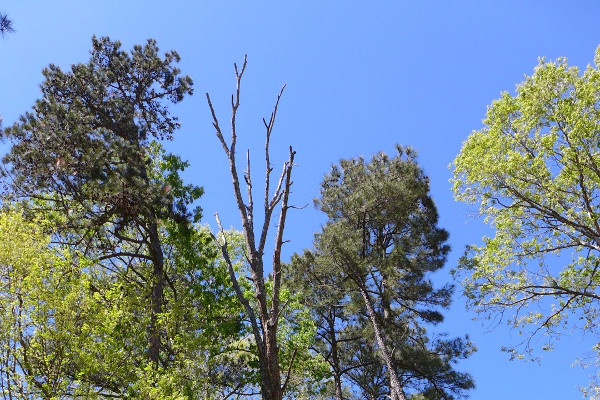I encountered a large, very dead oak tree when a man I ran into on another job called me out to his home. He said when I met him that someone walking the neighborhood looking for tree work had passed on it. I visited in person after he sent a picture that showed a favorable crotch for a rope.
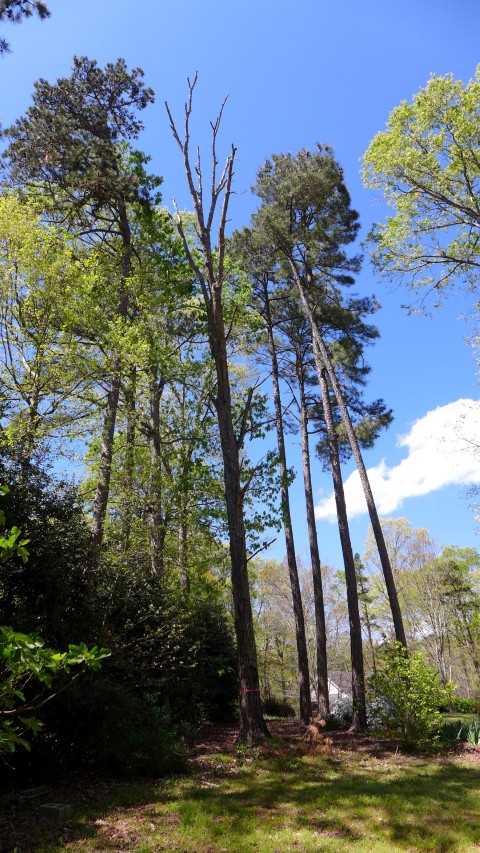
The tree was about 60 feet tall, 20-22 inches in diameter, full of dead wood up top, and rotten bark all the way to the roots. Even the root flare was rotting. There was some firmer wood inside. It had a favorable lean into a clearing backed by strong trees that could hold a rope. I told the man that if he wanted a precision job, bring in a cherry picker to bring it down piece-by-piece; I didn’t think anyone would climb this tree.
After my visit I sent a quote. I described what I would do: put a rope on the tree about 30 feet up and use a rope puller. I wanted the entire tree to come over like it was blown down. I gave three prices: lowest if it came down on one pull, middle if it required multiple pulls, and highest if I had to cut it down. I also asked him to be present with his own chain saw in case things went wrong. And a dead, rotten tree can go very wrong. I could be hit by falling branches, a collapsing shell, a trunk broken mid-point, or even the entire tree falling over.
I didn’t hear back from the man.
That is until a month later, when he asked me to come out and do the work that Wednesday. It had rained recently and I thought the conditions favorable for pulling the tree over. I was shocked when I arrived and found a new shed built in the exact spot where I had planned on felling the tree!
I went over options with the man. There was a good spot about 90 degrees from the lean. He assured me multiple times that, because the shed was free and although he didn’t want the shed hit by the tree, it was okay if the tree did hit it. He wanted that dead, rotten tree down. He also said the same thing about any ornamental trees, shrubs, or other plants. All damage in that area was waived.
I set up the area. Coned off a restricted area, got my rope in place, and got all my equipment out. In the video, you can see I didn’t use a running bowline to set the rope on the crotch. Instead, I ran the rope down to the base of the tree and attached it with a timber hitch. I wanted to get my rope back for another plan if things didn’t go well. I also used a zepplin bend on two ropes to get the length I needed.
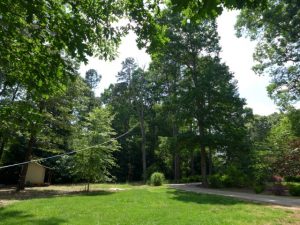
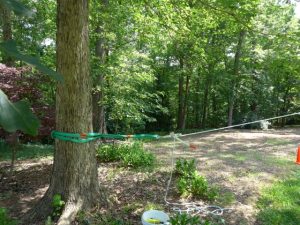
Story short. The tree would not go over with the puller alone. I had to cut. I gave a hand signal to the man so he could tell me if he saw the tree moving and I made my notch while looking up as often as possible. On the back cut I noticed one side cut much easier than the other. I ignored this clue at the time because I wanted to clear the tree as soon as possible.
Back on the rope puller, the tree came over. It landed perfectly, not hitting the shed at all. In fact, the only thing it hit was another tree the man will remove later.
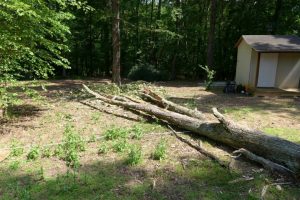
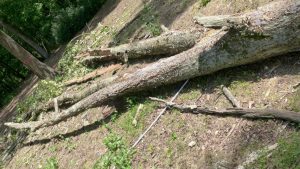
But it didn’t go as planned and I don’t like that. Two things showed why the tree fell it as it did. First, I wanted the tree to land 90 degree from the lean. Second, I noticed one side cutting more easily than the other. The result was the tree landed at 45 degrees from the intended lay. Jeff Jepson in “To Fell A Tree” states that trees felled perpendicular to the lean often result “…in a tree landing 45 degrees away from the intended lay.” One reason is “hinge wood [that] could not support the tree (weak, decayed)…” You can see that almost 50% of the hinge has either rotted away or is decayed, punky wood. This was the side that cut more easily.
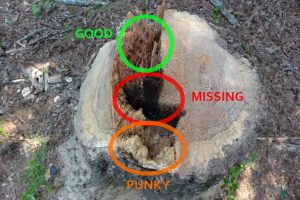
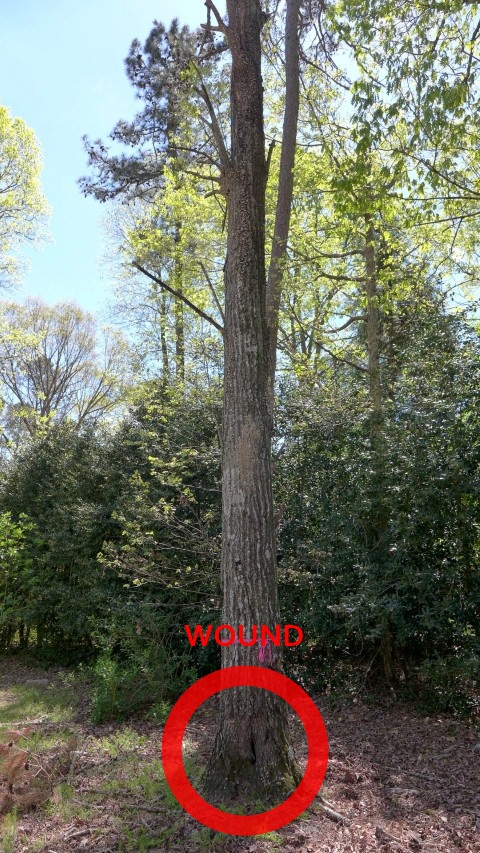
The tree was felled safely. The only way to get better odds on property damage would have been to use a bucket truck and that would have been 3 to 4 times more expensive. I laid out the facts for the man and he decided. That is how I treat my customers.
A dead, dangerous tree has been taken down. If you have dead trees on your property, especially where you work or play, get them down now. If you do it while the wood is still strong, you’ll get a much better price.

